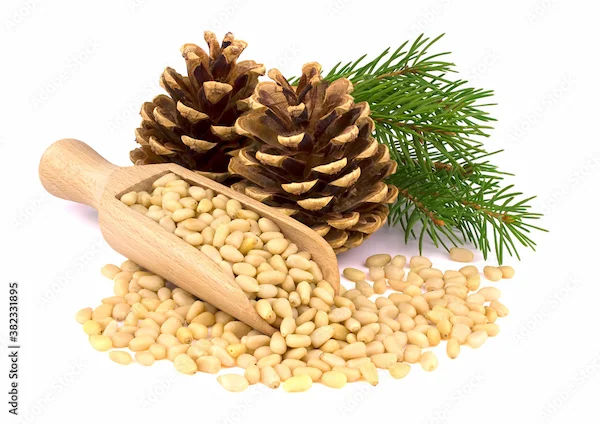Signs, Causes, and Prevention of Hyperuricaemia
Learn about the signs, causes, and prevention of hyperuricaemia to manage uric acid levels and reduce the risk of related health complications.

Written by Dr. Shaik Abdul Kalam
Reviewed by Dr. Dhankecha Mayank Dineshbhai MBBS
Last updated on 5th Sep, 2025

Introduction
You’ve likely heard of gout, the notoriously painful arthritis that often strikes the big toe. But what you might not know is that gout is usually the fiery symptom of an underlying condition called hyperuricaemia. This silent imbalance of uric acid in your blood can fly under the radar for years before causing problems. Understanding the signs of hyperuricaemia and its causes is your first and most powerful step toward prevention. This guide will demystify what leads to high uric acid levels and provide you with a practical, actionable plan to keep your levels in a healthy range and protect your joints and kidneys for the long haul.
What Exactly Is Hyperuricaemia?
Hyperuricaemia is the medical term for having an abnormally high level of uric acid in your bloodstream. To understand it, we first need to talk about uric acid itself.
Uric acid isn’t inherently evil. It’s a normal waste product created when your body breaks down purines, substances found naturally in your cells and in certain foods. Normally, your kidneys filter uric acid out of your blood and excrete it through your urine. Problems arise when your body produces too much uric acid or, more commonly, your kidneys excrete too little. This leads to a buildup, resulting in hyperuricaemia.
Asymptomatic vs. Symptomatic Hyperuricaemia
It's crucial to know that many people with high uric acid levels have asymptomatic hyperuricaemia. They feel perfectly fine, and the condition is only discovered through a routine blood test. However, even without symptoms, persistently high levels can cause slow damage. Symptomatic hyperuricaemia occurs when the excess uric acid crystallizes into needle-like urate crystals that deposit in joints, tendons, and surrounding tissues, triggering inflammation and intense pain, most commonly, a gout attack.
Consult a Nephrologist for the best advice
Recognizing the Signs and Symptoms of High Uric Acid
While hyperuricaemia itself is silent, its consequences are loud and clear. Recognizing these signs is key to seeking timely treatment.
1. The Classic Sign: Gout Attack
A gout flare-up is often the first dramatic sign. It typically presents as:
- Intense Joint Pain: Most commonly in the base of the big toe, but also in ankles, knees, elbows, wrists, and fingers.
- Lingering Discomfort: After the most severe pain subsides, some joint discomfort can last for days or weeks.
- Inflammation and Redness: The affected joint becomes swollen, tender, warm, and red.
- Limited Range of Motion: As the gout progresses, you may not be able to move your joint normally.
2. Beyond the Joint: Kidney Stones and Renal Issues
When uric acid crystals form in the urinary tract, they can create kidney stones. These stones can cause severe pain in your back, side, lower abdomen, or groin, and may lead to blood in the urine or painful urination. Chronic hyperuricaemia is also associated with a decline in kidney function over time, a condition known as uric acid nephropathy.
3. Silent but Significant: Asymptomatic Hyperuricaemia
The absence of pain doesn't mean all is clear. Long-term, untreated high uric acid is increasingly linked to other serious health issues, including hypertension, heart disease, and metabolic syndrome. This is why monitoring and managing high uric acid levels is important even if you feel fine.
The Root Causes: What Leads to Hyperuricaemia?
Hyperuricaemia isn't caused by one single thing. It's usually a perfect storm of factors related to production, excretion, or both.
1. Dietary Drivers: The Purine Problem
What you eat plays a significant role. Consuming foods very high in purines can overwhelm your system. Key offenders include:
- Red meat and organ meats (liver, sweetbreads, kidney)
- Certain seafood (anchovies, sardines, mussels, scallops, tuna)
- Sugary drinks and foods high in fructose, which accelerate purine production.
- Alcohol, especially beer, which is both high in purines and impairs uric acid excretion.
2. Your Body's Own Production: Endogenous Uric Acid
Surprisingly, most uric acid (about two-thirds) is produced endogenously, meaning it comes from the natural breakdown and turnover of your own cells. Some people simply have a genetic predisposition to overproduce uric acid, regardless of diet.
3. The Excretion Issue: When Your Kidneys Can't Keep Up
For many, the primary problem isn't overproduction but underexcretion. If your kidneys aren't efficiently removing uric acid, it builds up. This can be due to:
Medications That Hinder Excretion
- Diuretics (water pills) used for high blood pressure.
- Low-dose aspirin.
- Niacin (vitamin B-3).
- Drugs for Parkinson's disease.
Health Conditions Linked to Impaired Excretion
- Chronic Kidney Disease: Damaged kidneys can't filter effectively.
- Obesity: Being overweight is a major risk factor.
- Hypothyroidism: An underactive thyroid can reduce kidney function.
- Psoriasis: Rapid skin cell turnover increases purine load.
- Metabolic Syndrome: Conditions like insulin resistance and hypertension are strongly correlated with high uric acid levels.
Proactive Prevention: How to Lower Your Uric Acid Levels Naturally
Prevention is centered on managing the factors you can control. For many, natural remedies for high uric acid and lifestyle changes are incredibly effective.
1. Dietary Modifications for Uric Acid Control
Making the right dietary changes can help manage uric acid levels and prevent complications associated with hyperuricaemia.
Foods to Embrace: Your Anti-Hyperuricaemia Diet
- Low-Fat Dairy: Milk, yoghurt, and cheese have been shown to lower uric acid risk.
- Complex Carbohydrates: Eat more whole grains, fruits, and vegetables (yes, even most high-purine veggies like spinach and mushrooms are okay for most people!).
- Vitamin C-Rich Foods: Oranges, bell peppers, and strawberries may help the kidneys excrete uric acid.
- Coffee: Both regular and decaf are associated with a lower risk of gout.
Foods to Limit or Avoid
- Reduce High-Purine Animal Proteins: Limit red meat, organ meats, and certain seafood.
- Avoid Sugary Beverages: Cut out soda and fruit juices sweetened with high-fructose corn syrup.
- Moderate Alcohol: Especially beer and spirits.
2. The Power of Hydration
Staying well-hydrated is one of the simplest and most effective ways to prevent gout. Water helps your kidneys flush out excess uric acid. Aim for 8-10 glasses a day, more if you exercise or live in a hot climate.
3. Weight Management and Regular Exercise
Losing weight slowly and steadily helps reduce uric acid levels. Crash dieting can actually trigger a gout attack. Regular, low-impact exercise helps maintain a healthy weight and improves overall metabolic health.
4. Understanding and Managing Comorbidities
Work with your doctor to effectively manage other health conditions like high blood pressure, diabetes, and high cholesterol. Controlling these often helps improve uric acid levels as well.
When to See a Doctor: Diagnosis and Medical Treatment
If you experience a sudden, intense pain in a joint, especially in your big toe, see a doctor. Diagnosis is simple, typically involving a blood test to measure serum uric acid levels. If lifestyle changes aren't enough, a doctor may prescribe medications like allopurinol or febuxostat (to reduce production) or probenecid (to improve excretion). These are often necessary for people with frequent gout attacks, tophi (crystalline lumps under the skin), or kidney stones.
Get Your Health Assessed
Conclusion
Hyperuricaemia is a common but manageable condition. While the sudden, severe pain of a gout attack is a clear warning sign, the silent nature of high uric acid is what makes it particularly insidious. By understanding the root causes, from dietary choices to underlying health issues, you empower yourself to take proactive steps. Focus on a balanced diet rich in the right foods, prioritize hydration, maintain a healthy weight, and partner with your healthcare provider for regular check-ups. Remember, prevention is always better than cure. Taking control of your uric acid levels today is a powerful investment in your long-term joint and kidney health, helping you stay active and pain-free for years to come.
Consult a Rheumatologist for the best advice
Consult a Rheumatologist for the best advice

Dr. Kaushik V V
Rheumatologist
17 Years • MBBS, MRCP, CCT (GIM), CCT (Rheumatolgy), FRCP
Chennai
Apollo Hospitals Greams Road, Chennai
(125+ Patients)

Dr. Ramineni Naga Tejaswini
Rheumatologist
3 Years • MBBS, DNB(Internal Medicine), DrNB ( Clinical Immunology and Rheumatology)
Hyderabad
Apollo Hospitals Jubilee Hills Hyderabad, Hyderabad

Dr Jagan Babu
Rheumatologist
3 Years • MBBS,MD,DNB,DM Rheumatology
Madurai
Apollo Speciality Hospitals KK Nagar, Madurai

Dr. Anand Ravi
General Physician
2 Years • MBBS
Bengaluru
PRESTIGE SHANTHINIKETAN - SOCIETY CLINIC, Bengaluru

Dr. Thorana Prakash M
General Physician
2 Years • MBBS
Bengaluru
PRESTIGE SHANTHINIKETAN - SOCIETY CLINIC, Bengaluru
Consult a Nephrologist for the best advice

Dr. Manju Kamal
Nephrologist
12 Years • MBBS,MD(General Medicine), DNB,DM(Nephrology)
Angamaly
Apollo Hospitals Karukutty, Angamaly

Dr. Vamsee Priya Marina
Nephrologist
13 Years • MBBS, MD (Internal Medicine), MD (Nephrology), Diplomate American Board of Internal Medicine
Hyderguda
Apollo Hospitals Hyderguda, Hyderguda
(50+ Patients)

Dr. Krishna V Patil
Nephrologist
16 Years • MBBS, MD(Med), DM(Nephrology), FICN(Canada), Fellow of American Society of Nephrology
Hyderabad
Apollo Hospitals Jubilee Hills, Hyderabad

Dr. Jignesh Pandya
Nephrologist
27 Years • MD(Medicine), DNB(Nephrology).
Bilaspur
Apollo Hospitals Seepat Road, Bilaspur
(25+ Patients)

Dr. Kavita Parihar
Nephrologist
26 Years • MBBS, MD(MED), DNB(NEPHRO)
Ahmedabad
Apollo Hospitals Gandhinagar, Ahmedabad
(25+ Patients)
_0.webp)



